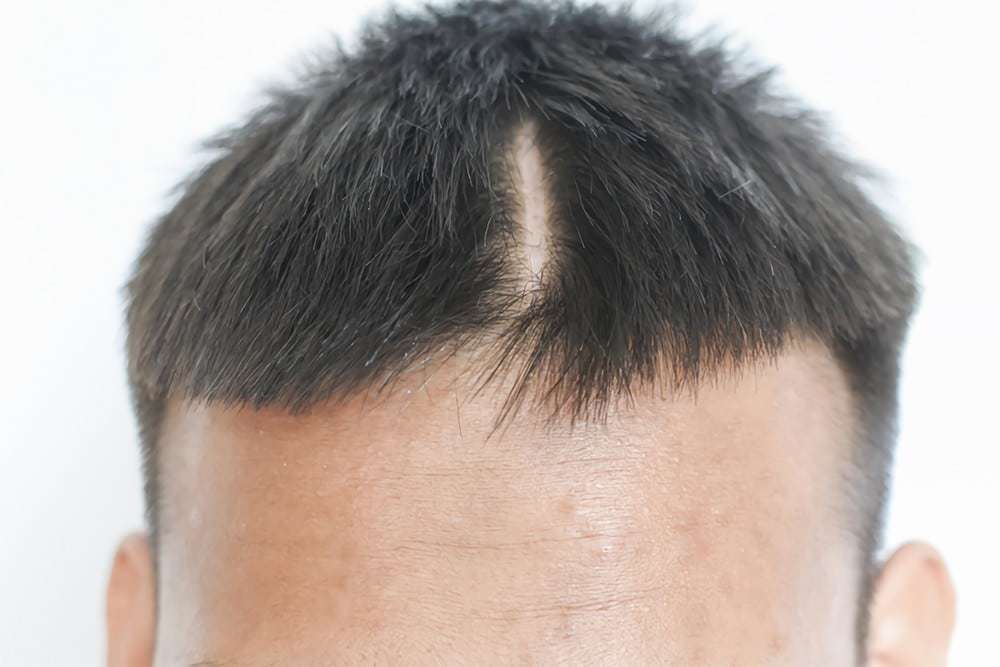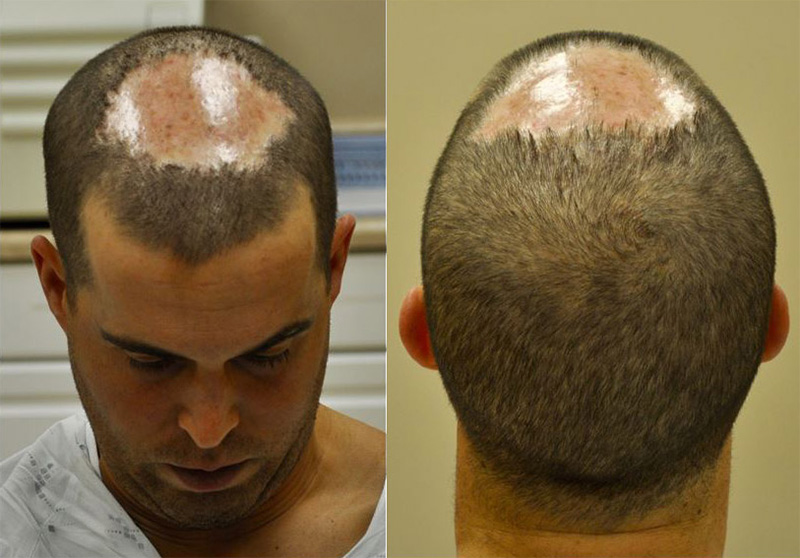Table Of Content

However, scarring can still be an issue for some patients, making FUE a better overall option. No matter what procedure you choose, a great surgeon will help minimize scarring and make the most of every graft for lasting, satisfying results. It’s worth reiterating that a top-tier surgeon can dramatically impact the scarring that a patient will experience after a hair transplant. When hair is transplanted to the recipient region on the scalp, some minor scarring can also occur due to tiny incisions made by the surgeon for the implantation of new follicle units.
FUT (Follicular Unit Transplantation) Scars
The hair grafts are removed from the scalp strip and then placed into the recipient areas of the scalp. There are two types of surgeries available for hair transplants, commonly known as “Hair Plugs”. There’s a certain amount of scarring that occurs with each surgery, even if you have an experienced surgeon. Their skill and extraction instruments used may reduce the amount of scarring, however.
Cheyenne Jackson reveals he had FIVE hair transplants as he shows off scar from surgeries - Daily Mail
Cheyenne Jackson reveals he had FIVE hair transplants as he shows off scar from surgeries.
Posted: Sun, 24 May 2020 07:00:00 GMT [source]
The Use of Micropigmentation for Scar Coverage
Trichologist warns against 'botched' hair transplant surgery - Metro.co.uk
Trichologist warns against 'botched' hair transplant surgery.
Posted: Fri, 04 Sep 2020 07:00:00 GMT [source]
This means that, though hair transplant scars are permanent, they are essentially invisible. Yes, hair transplant scars are permanent, though they can fade a little with time. Hair transplant surgery involves making incisions in the scalp, and it is both natural and inevitable for these cuts to cause permanent scarring on the skin’s surface. Follicular Unit Transplantation (abbreviated to FUT) is the formal name for a type of hair transplant surgery that is sometimes referred to as ‘the strip method’ or ‘strip surgery’. This is because it involves the removal of a small strip of skin from the back of your scalp.
Hair Transplant Scars Everything a Potential Patient Needs to Know
You and your doctor can best determine which procedure will be most effective for you.
Even with the best scar removal technology the skin will not be the same as the unscarred skin. However, minimizing hair transplant scar visibility can be reduced through techniques such as scalp micropigmentation. Scarring happens because it is your body’s way of responding to trauma. Hair transplant surgery is a kind of trauma to the skin of your scalp. Different hair transplantation procedures cause different levels of trauma to the scalp therefore people could end up with different types of scars. Make sure to get well-informed and steer away from hair transplant scar myths.
Nowadays, the mechanisms and techniques used for hair transplants are being applied to other areas of the body and face, with increasing popularity and success. Cosmetically, there are a number of ways to conceal the scar, but you should know that as your hair grows, it will cover most of the scar. In addition, keloid scars are more difficult to conceal as they are more raised and appear larger than the original surgical scar. Typically, you’ll get this procedure repeated several times over two to three months. This offers the best result for recovery and fuller, thicker hair.
Explore Treatments
After they prepare the grafts, the surgeon cleans and numbs the area where the hair will go, creates holes or slits with a scalpel or needle, and delicately places each graft in one of the holes. They’ll probably get help from other team members to plant the grafts, too. The Hasson and Wong Hair Transplant Clinic is located in Vancouver BC. Dr. Wong and Dr. Hasson have been practicing hair transplant surgery for more than 20 years each. They are world-renowned for their consistently outstanding results and for the advances they have made in Lateral Slit Technique, mega-sessions and FUT.
Minimizing Scarring During the Hair Transplant Procedure

We use advanced FUE variations such as DHI and Sapphire FUE combined with the latest methods such as bio-enhancements to ensure patient health, quick recovery, and outstanding results. And actually, the scars caused by FUT are the biggest deal-breaker of the technique for the majority of patients and physicians, including me. And, when you compare it to FUE’s 1mm scarring, which I’ll talk about in just a bit, you’ll see that it’s huge compared to modern techniques. I know that hair plugging is not practiced as a hair transplantation technique anymore. Many over-the-counter products claim to help heal scars and cause them to fade with continued application.
Follicular unit extraction (FUE)
The scalp is still numb and the slightest touch could alter some of the surgeon's work. You won't be able to wash your hair the first four days but after that, you will reap the benefits of luscious, permanent hair. People with androgenic alopecia, which is the most common type of hair loss, make the best candidates for hair implantations. This condition is commonly referred to as male or female pattern hair loss. More than 50 percent of women will also experience a noticeable amount of hair loss in their lifetime. Hair transplants can be an effective treatment for hair loss, but they’re not right for everyone.
Especially as a patient ages, the skin on their head will begin to sag and exaggerate the appearance of the scar as it widens. Often these procedures are combind with fixing the bad hair transplant. Scalp micropigmentation for scars can be the best option if you have dealt with a long, raised keloid scar from a hair transplant surgery. The procedure is performed by a technician and typically takes multiple sessions to finish, depending on the size of the scar.
The follicular units are dissected under a microscope and then placed into the recipient sites at the proper angle and orientation to match the natural growth direction of your hair. "This strip is dissected under a microscope into individual follicular units, which contain one to four hairs each," Dr. Doshi says. FUE involves extracting hair follicles individually from the donor areas of the scalp. A micro-punch tool is used to remove each hair follicle graft, leaving tiny round scars approximately 1 millimeter in diameter. The extracted follicles, containing one to four hairs each, are then transplanted into recipient areas of the scalp.
But before going to the closest laser hair removal place to deal with your scar, there are things you should know. FUE is a better option if you are not looking to have a pretty visible scar on the back of your scalp. Scarring after a hair transplant is an inevitable part of the surgery and a natural part of the healing process. Even if there are any surgical scars, they are easily manageable and concealable. After the hair transplant procedure, proper wound care is essential for minimizing scar formation. Keeping the area clean, avoiding strenuous activities, and following Dr. Bared’s guidelines for care can significantly impact the healing process.
Cosmetic treatments like microchanneling, dermabrasion, laser resurfacing, and radiotherapy can accelerate the process and achieve better results. As we mentioned, the easiest way to cover scars on the donor area is to simply wear longer hairstyles and cover them up as you go about your day. Scars on the hairline or vertex may become visible, and patients may want treatment to minimize or remove these marks. It should be mentioned that the severity of scarring is not only due to the type of procedure but also the ability and experience of the surgeon running the show. A veteran FUT expert will leave a better-looking scar than a haphazard FUE procedure any day.
According to Hardik Doshi, MD, lead surgeon of hair restoration at Ample, shampoos infused with ketoconazole, minoxidil, or saw palmetto may help improve scalp health and stimulate hair growth. Additionally, growth supplements containing biotin, vitamins, and minerals such as iron, zinc, and vitamin D may support hair health and promote regrowth. Other hair loss treatment options include low-level laser therapy or platelet-rich plasma therapy. If you continue to lose excess strands a day, it might be time to consider something more permanent, like a hair transplant. During FUT, a surgeon cuts a strip of hair from the back of your scalp and extracts individual hair follicles. In both surgeries, the follicles are implanted into balding parts of your scalp.
No comments:
Post a Comment